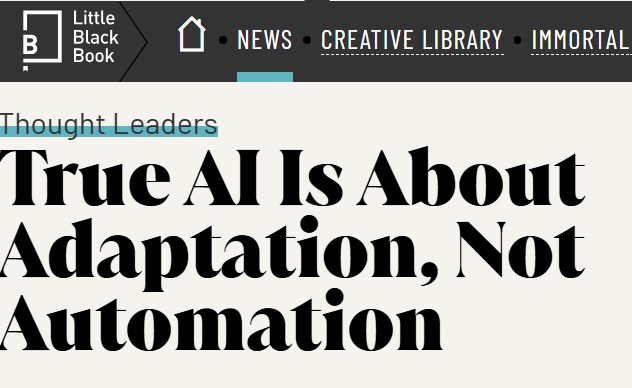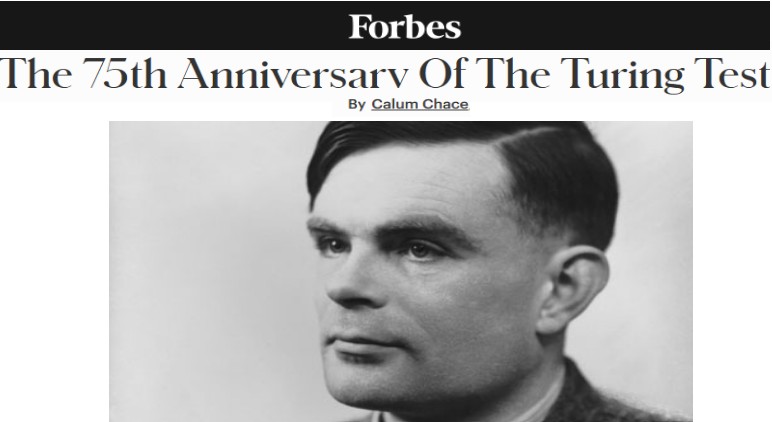Last week I was in Tokyo. It has been far too long since I last visited Japan. I fell in love with the culture over 25 years ago whilst studying a Japanese Martial Art, Shorinji Kempo, at university. Japan is steeped in a rich cultural history that we often associate with words like aesthetics, values, traditions, nature, and spirituality; aspects of our experience we might think of as uniquely human.
Being there, observing the cultural differences and similarities, gave me time to explore something that has been on my mind for years: the opportunity for organisations to evolve their approach to ‘corporate values’. While current methods have served a purpose, I believe there is a more robust and structured way to approach the topic. And in the age of AI, getting this right is becoming existential for businesses.
Below is the crystallisation of an idea that, very soon, businesses will not only be marketing to humans but competing furiously to win the attention of AI agents. These AI agents are both reflections of human culture – through their ingestion of human-created content – and yet materially distinct from us. Arguably, once we give our personal AIs agency to make purchasing decisions, they will likely be much more effective and ‘rational’ buyers than we humans. AI agents will be able to trawl masses of information and make complex trade-offs to ensure the products they’re purchasing align with our needs and values.
What does this mean for companies? It means that companies need to have a strong and distinguished value proposition that has appeal to these new, super-rational extensions of our ‘decision-making unit’. And, from a brand-building perspective, companies need to evidence loudly the commitments they are making to achieve their vision. The goal of marketing is to get the right products in front of the right customers at the right time. Agents are an entirely new species of customer, a customer that is much more effective at aligning decisions with values. In the age of AI, amplifying the value and purpose of your company is going to matter more than ever before.
Completely rethinking value(s)
Many years ago, I performed an analysis across hundreds of corporate ‘values’. What took weeks then, AI can now validate in seconds. The analysis surfaced an important insight: most corporate values, while unique in combination, are drawn from a shared pool of concepts.
The key finding was that these concepts consistently fall into three distinct groups, which I categorise as Virtues, Values and Principles. The opportunity for businesses lies in recognising this distinction and using it to create a more intentional and structured cultural foundation.
My analysis suggested a simple, powerful definition for each: Virtues are about character and integrity. Values are about the benefits we deliver to customers. And Principles are our outward commitments to the wider world.
Here are some examples of virtues, values, and principles that came out of my most recent ChatGPT analysis, and that align with my original findings:
1. Virtues
- Honesty & Truth: honesty, authenticity, transparency, openness, candour.
- Trust & Reliability: trust, dependability, accountability, responsibility.
- Fairness & Justice: fairness, equity, impartiality, justice.
- Respect & Dignity: respect, humility, compassion, kindness, courtesy.
- Courage & Humility: courage, boldness, bravery, modesty, humility.
2. Values
- Excellence & Quality: excellence, quality, professionalism, mastery.
- Learning & Growth: curiosity, continuous improvement, growth, development, learning.
- Innovation & Creativity: innovation, creativity, imagination, experimentation, adaptability.
- Accountability & Results: ownership, efficiency, effectiveness, performance, results.
- Customer & Service Focus: customer-centricity, client value, service, obsession, loyalty.
- Teamwork & Collaboration: collaboration, partnership, unity, cooperation, synergy.
3. Principles
- Community & Citizenship: community, belonging, generosity, philanthropy, contribution.
- Social Responsibility: responsibility, ethics, good citizenship, giving back, social good.
- Sustainability & Stewardship: sustainability, environment, ecology, stewardship, future-mindedness.
- Human Flourishing: care, well-being, inclusion, diversity, empowerment, equity.
- Global Perspective: impact, purpose, legacy, universality, connectedness.
Most companies select a handful of these concepts to act as their core values, and for good reason. A short, memorable list helps employees focus and make difficult trade-offs – prioritising quality over speed, for example. It also helps build a brand identity that resonates with customers.
The trade-off is that this can lead to a mix of terms – virtues, values, principles – that lack a clear, shared definition. It’s time to bring clarity to these ideas, not just for our employees, but for our customers, and soon, for their AI agents.
To prepare for this shift, we need to move beyond a simple list of words and adopt a clearer, more structured approach. By separating these concepts, we can be more purposeful and prepare for a new class of customer that demands it.
Virtues
Integrity is a common company ‘value’. The irony won’t be lost on you that integrity was one of Enron’s values. To me, it makes little sense for a company to explicitly declare they ‘value good moral behaviour’. Of course we do. We want all our employees, partners, suppliers, associates and ecosystem to behave morally. Understanding morality is a well-trodden ground; it’s the study of Virtues. Often, these virtue-related words can function as a practical ‘catch-all’ in a code of conduct. If an associate operates against these standards, there is a clear argument for dismissal. While it’s practical to have a generic framework to address ‘bad behaviour’, we shouldn’t mistake this for the deeper work of developing moral character.

Cherry blossoms are Japan’s national flower. It’s a symbol that resonates a lot with me, reminding me of my time there – I have to admit that Damien Hirst’s ‘Virtues’ is one of my favourite series of paintings because of it. These eight blossom paintings symbolise the beautiful yet fleeting nature of life. The titles of each blossom are directly drawn from the ‘Eight Virtues of Bushidō’ as described by Inazō Nitobe; Justice, Courage, Mercy, Politeness, Honesty, Honour, Loyalty and Control.
There are many other moral frameworks and doctrines, but for companies to take ‘virtue development’ seriously then they need to implement comprehensive ways of exploring these moral foundations. There are mechanisms; Moral Foundation Theory is one example, but to develop people’s morality properly requires an enormous amount of effort; effort that companies tend not to be able to invest.
Values
Two things that a company should hold constant are its Purpose and its Vision. The guiding north stars that can be used as a beacon for all decisions. Does this decision align with our purpose and help move towards our vision? I’m a deeply purpose-driven founder/CEO, and believe that for companies to survive and thrive – attract talent and win customers (including AIs) – you need to have an incredibly strong north star. Again, purpose and vision are often conflated even by the world’s most successful organisations. Your purpose is why you get out of bed in the morning and do what you do. Your vision is a picture of the world or future you want to create. Satalia’s purpose is to solve the world’s hardest problems with AI. Its vision is a world where everyone is economically free. Oxfam’s purpose is to fight injustice and inequality. Its vision is a world without poverty. In a world without poverty Oxfam does not exist. Oxfam’s vision is to not need Oxfam.
Your products and services are born out of your purpose. Interestingly, the cluster of words associated with ‘values’ (above) typically relates to the output of a business – delivering customer value. We know how successful companies like Amazon have been in relentlessly obsessing about the value to customers. And for me, this needs a whole category in of itself, which is all about the customer value proposition, and (confusingly) called Values. The origin stories of some of the most successful companies start with the founder(s) solving a problem that frustrates them directly. They created a solution that they, themselves, valued. And by creating value for themselves, they were then likely to create value for others in the same way. The purpose of a company’s products and services is to solve a customer’s pain or provide a gain. Consumers value these products/services for that reason.
There’s a fabulous article based on research by Bain and Co. in the Harvard Business Review from 2016 called ‘The Elements of Value’. In it the authors identify 30 elements that consumers value and map them loosely to Maslow’s hierarchy of needs (there’s also a B2B version if you’re interested).

When making purchasing decisions, consumers will consciously and unconsciously make trade-offs across these elements. So, when it comes to values, as far as I’m concerne,d these should be words that relate to what you want your customers to feel when consuming your company’s products and services. They should be the benefits you’re providing to the customer, like quality or safety, excitement or nostalgia. Will this product make me more attractive, save me time, or give me hope?
For example, what product do you think about when I say ‘safe cars’? What about ‘extreme sports’? What about Christmas? I’m activating neurons in your brain, which are then activating other neurons associated with brands and products. One of the goals of marketing is to associate and reinforce products with values in people’s minds. The best brands are incredible at associating and reinforcing their products with consumer values.
There is a lot of emphasis and excitement around how AI can create hyper-personalised ads. Whilst there’s an important place for personalisation, I much prefer the idea of ‘relevance’. If you think about the ads that have resonated with you the most, I doubt they were personalised ads. They were probably ads that connected you emotionally to a community at a cultural moment. Making these emotional connections requires creative empathy – the ability to connect people to products to values at an emotional level. This creative capability is still largely out of reach of AI, but something I touch upon in one of my recent posts about AI and Creativity.
Principles
Values are the propositions to your consumers; the benefit you want your customers to receive/feel when consuming your products. Principles are your company’s commitment to benefit the world; they are what you want your company to feel when customers buy your products. This is an important nuance. Values are benefits to customers, Principles are inspired by the vision and are benefits to the world. Arguably, Principles should be directly related to a company’s vision. What future does this company want to create, and how are we demonstrating this commitment to our customers? Showing commitment towards a vision is important both internally for employees, but also with customer brand building and loyalty.
MUJI is a great example of a company that has gotten its principles right. Originally founded in Japan in 1980, MUJI offers a wide variety of good-quality products, including household goods, apparel and food. Mujirushi Ryohin, MUJI in Japanese, translates as ‘no-brand quality goods’, and is based on three core principles, which remain unchanged to this day: 1. Selection of materials, 2. Streamlining of processes, and 3. Simplification of packages. According to MUJI, their products are born from an extremely rational manufacturing process and are renowned for being succinct and simple.
Summary – the free umbrella…
25 years ago when I first visited Japan, I was struck by their sharing culture. For example, umbrellas are essentially free. The term aiaigasa refers to the culturally romantic practice of sharing an umbrella with a significant other. There are unattended street stands where people borrow and return umbrellas as a gesture of trust.
Back then, I had an idea (that I never executed on, but one day might!) to try to spawn a similar practice, but in London. The idea was to populate key areas across London (such as shopping districts and tube stations) with stands of free umbrellas. These umbrellas would be paid for by companies that advertise on them. You have free access to umbrellas (that you share), but for the privilege, you’re also a walking billboard.
If I were to start that company, then I’d use the framework below to lay the cultural foundations:
Purpose. What motivates you to do what you do Advertise by doing good.
- Do good by advertising
Vision. A picture of the world or future you want to create.
- A sharing economy of usefully abundant goods (i.e. umbrellas)
Virtues. A code of conduct of moral behaviour.
- Honestly, I’d grab any decent ‘code of conduct’ document and get my employees to sign it
Values. Benefits your customer will receive and/or feel (typically product associations).
- Subsidised by advertising makes umbrellas free to protect consumers caught in the rain
- Key values for the consumer are cost-effective (free) and safe (not getting wet)
- The key values for the advertiser are cost-effective advertising whilst serving a public good
Principles. Commitments towards your vision (typically brand associations).
- Cultivate a sharing and caring economy
- Sustainable sourcing and reusable goods Support advertisers that are purpose and vision-driven/aligned
Unlike humans, who struggle to make more than a small handful of trade-offs, complex decision-making is well within the grasp of AIs. Once people start giving agency – purchasing power – to their digital assistants, we will see AIs making much more ‘rational’ purchasing decisions that better align customer and company values. AI will be able to rapidly research the ‘background’ of the product and brand, comparing and contrasting the benefits of each product as well as how the company is delivering its commitments against its vision. For example, AI is going to be great at ascertaining whether the product (and its components) are locally/nationally sourced, the sustainability of its manufacturing practices, the generosity of its employee benefits, the sentiment of its suppliers, its approach to animal testing, etc, etc. And as AIs (or shopper agents) become more prevalent, companies are going to have to better evidence and market these benefits and commitments.
For the world’s leading brands, articulating this new, structured value proposition is the next great creative challenge. It’s not just about what you sell, but what you stand for, and evidencing it at every turn. As we guide our clients into this new era of AI-mediated commerce, helping them build this authenticity will be paramount. And don’t forget the umbrella…
Useful links:
- 250 company values. https://www.workpointsplay.com/blog/2022/250-company-values
- 190 company values. https://6q.io/blog/190-examples-of-company-values/
- Eight Virtues of Bushido. https://en.wikipedia.org/wiki/Bushido:_The_Soul_of_Japan
- Moral Foundation Theory. https://en.wikipedia.org/wiki/Moral_foundations_theory
- Oxfam’s Purpose. https://www.oxfam.org.au/about-us/our-vision-values-and-goals/
- The Elements of Value. https://hbr.org/2016/09/the-elements-of-value




